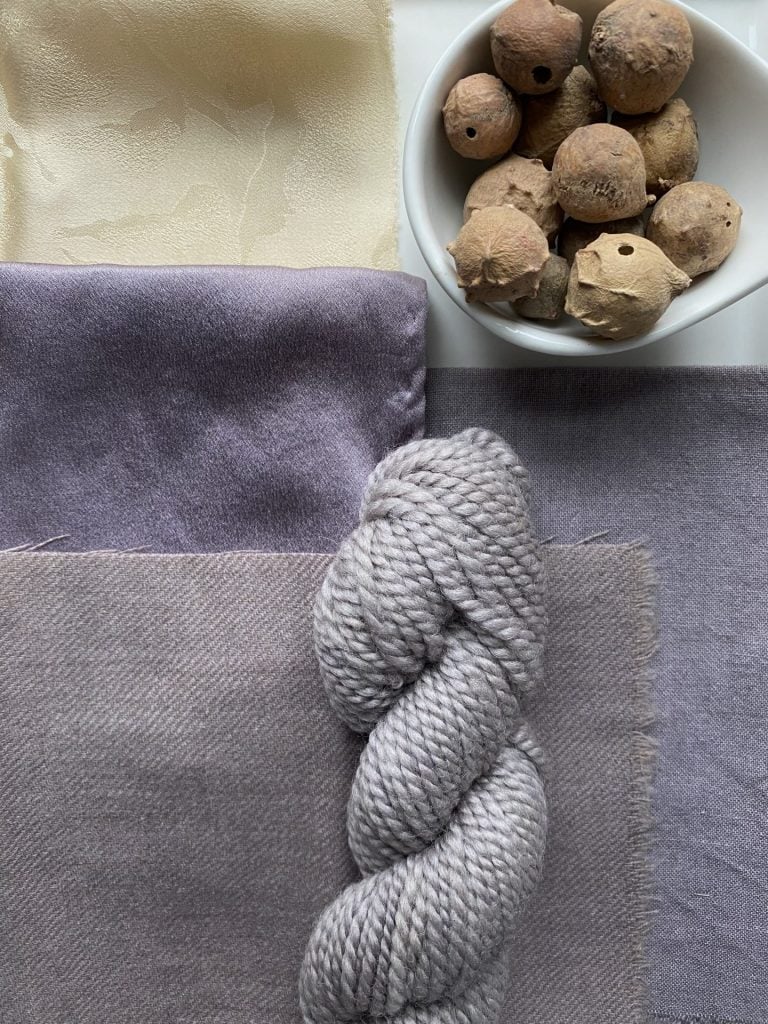
We get lots of emails from customers about challenges with dyeing and needing Botanical Colors’ President Kathy Hattori’s help. Why not share the learning so we can all benefit? From our inboxes to you, it’s simple: You Asked, Kathy Answered. Email questions@botanicalcolors with your plea for help!
YOU ASKED: I would like to use oak galls for a tannin bath, and we live in an oak forest so I have a large bag full! Can you explain how to go about making my own powdered oak tannin powder. I am hoping it could be as simple as just putting the galls into the blender and whirring them around until they powder, but is there anything else I need to do before using it?
KATHY ANSWERED: You are lucky to have such a wonderful source of tannins available to you. Yes, it is as simple as taking the dried oak galls, crushing them and using. If you have extra crushed oak galls, you can use them for future projects.
With so much fall bounty all over the ground right now, it’s easy to start collecting acorns, walnuts and other free, forageable tannin sources and build your natural dye stockpile. For example, acorn caps and nuts , walnut hulls, oak galls of all sizes, and fallen bits of tree bark are all rich tannin sources. I always collect windfall and never pluck from the tree. I also leave a fair amount for the creatures who depend on these foodstuffs. You can store them like a squirrel in your own studio space and they’ll keep for many seasons. Be sure they are thoroughly dry before putting them into sealed containers.

Tannins may be powdered when dry by grinding, pounding or crushing. Some people use a mortar and pestle, others try smooth rocks, one person I know drives over her walnut harvest on a gravel driveway to husk the hull from the nut. Sometimes if you leave black walnuts out, the squirrels discover them and do all the husking for you.
Black walnut is a North American native tree and the hulls can be used fresh, dried, or fermented. Fermentation involves covering walnut hulls or whole walnuts with water, then covering the container and letting bacteria do its thing. Some say that the mixture, which includes a very smelly sludge is ready after 3 weeks. Pour the sludge into a dye pot and heat the mixture to further extract the color. You can simmer for about an hour, or alternate simmering and cooling for a day, letting it rest overnight. Strain the mixture, retaining the sludge and use the brown liquid as your dye liquor. If you have mordanted fibers, walnut will be a golden yellow-brown. Unmordanted fibers will be “walnut” brown.
Here in the PNW, we have American hazelnut husks, which look like light green crazy frilly covers to the small, smooth hazelnut clusters. I haven’t tried them yet, but I bet those are full of tannins!
Want to know how to use tannins like a pro? Sign up for Cosmic Nebula-Otherworldly Surface Design for Cotton, Hemp & Silk! Instructor Cara Marie Piazza will dive into tannins, building off her Back To Black class but this time making cosmos-inspired designs.
